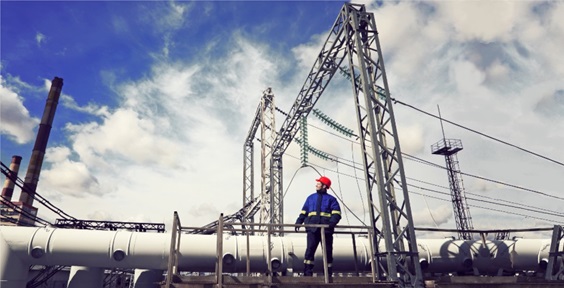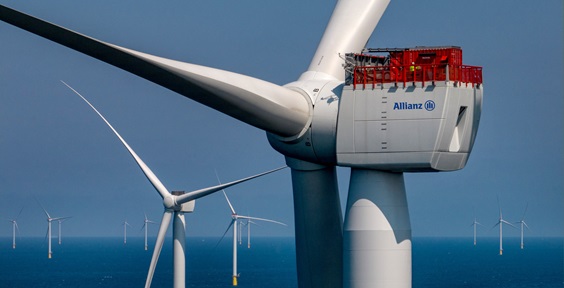The ABCs of PPPs

Public-run infrastructure projects running over budget has become almost cliché. But what if they were outsourced to the private sector? Allianz chief investment officer Andreas Gruber gives his insights on the benefits and risks of public-private partnerships.
Government spending on infrastructure projects can take on a dynamic all its own. In an extreme example, the Sydney Opera House ran 1,357 percent over budget. Finished in 1973, it still holds the world record. Allianz.com spoke with Allianz chief investment officer Andreas Gruber to understand the benefits and risks of public-private partnerships.
Allianz.com: Public-run infrastructure projects are notorious for running over budget. What can governments do to keep their infrastructure projects running on time and on budget?
Gruber: Well, for one, governments could outsource them to the private sector. We call this public-private partnerships, or PPPs. These partnerships can be set up for anything from simple funding contracts with private companies for a street or school, to long-term management contracts that include planning, building, operation and maintenance. It is a practical alternative because private companies have to meet the bottom line. That gives them a big incentive to deliver on budget and on time. If not, they risk taking a financial hit or losing business. Governments, on the other hand, are notorious for passing on such risks – and cost – to the taxpayer.
Who owns the infrastructure in such a setting?
It depends. Sometimes, the private-sector partner finances and constructs a new infrastructure component, operates it on behalf of the government and maintains it under a long-term service agreement. In this case, the infrastructure belongs to the government. When the term of the contract expires, it is transferred back to the public sector. This would normally be the case for motorways. Sometimes the infrastructure remains permanently in private ownership. For example, Thames Water Utilities Ltd. in the United Kingdom. Thames Water is a private utility company responsible for the public water supply and wastewater treatment in large parts of Greater London. It is also responsible for a range of water management infrastructure projects such as the Tideway Tunnel project – a new 25-km sewage tunnel that will run up to 65-meters below the River Thames. Allianz partnered with other investors to invest a notable triple-digit, million-euro figure into the project. The Tideway Tunnel will be built over the next seven years. Not only will it improve London's wastewater infrastructure, it will improve the ecology of England's longest river.
It would seem that PPPs transfer risk from the government to the private sector. Doesn’t that make it risky for investors too?
Sure. No risk, no return. Actually, these types of projects offer a relatively high amount of security. They are long-term investments into indispensable services. We need highways and transportation systems, energy, utilities, schools and hospitals. These are not short-term wants, but long-term necessities. That said, the risk-return profile depends on their specific structure. For instance, the lowest risk is when the cost of the project is fixed and fully financed. Maintaining infrastructure over decades can be a bit more complex because there are more variables, for instance inflation. The model with the highest risk and highest returns are projects that carry volume risk over the long term. Such as when a private company is able to cover its financing with toll revenues.
Is that why Allianz is investing in PPPs like the Tideway Tunnel?
As life insurers, we have a tremendous responsibility to our customers. They are counting on us and are paying premiums with the expectation of receiving an attractive and stable income over what will hopefully be a very long retirement period. Infrastructure offers long-term, predictable cash flows to match these extended liabilities. With bonds offering zero and even negative interest, infrastructure is becoming an ever more interesting asset class.
That said, there is also a social aspect. For instance, climate change. Unless effective action is taken soon, the world will heat up to a devastating degree over the course of this century. The global community will not be able to tackle climate change unless countries and cities modernize their infrastructure. Just think about all the exhaust from cars in a traffic jam, outdated coal technology or inadequate insulation. Even some of the world's most industrialized countries have infrastructure systems that are some 30- to 50-years old. With expanding national debt, governments often don't have the resources themselves to fund the infrastructure they need.
So, if PPPs are so great, why is there so much debate?
Every good trait has its negative side. The private sector has to meet its bottom line, which means it will have to deliver on budget. That's positive. However, some worry that privatization would put infrastructure at the mercy of that bottom line. For instance, by not investing enough on maintenance, or price structures that make the consumer responsible for shortcomings. These are just some of the possible scenarios. However, each of them can be addressed by putting sensible incentive programs, and corresponding rules and regulations into writing. We – both the private and public sectors – have gained a lot of experience over the years. We are in a much better position to negotiate possible hurdles and come to a contractual agreement that covers the overall framework in great detail for the good of all parties.
Another common argument is that the public sector can finance infrastructure projects at a lower cost by issuing government bonds and then building the infrastructure itself. The argument is correct in terms of cheaper financing. However, look at the fiasco of the Berlin Brandenburg Airport, which didn't pass its security inspection or Alaska's 'bridge to nowhere', which was planned, but thankfully, never built. The private sector is much more experienced and focused on cost management and delivering on time. When you talk about cost, you have to look at the whole picture.
Germany is planning to spend 264 billion euros on its transportation infrastructure by 2030. Do you expect to see any of that being outsourced to the private sector?
PPPs are a very established and successful model in many countries, such as Australia, France and the United Kingdom. The model hasn't really taken off in Germany. That's largely due to the decentralization of its federal government. Germany has different regional authorities that have to be involved in the planning, approvals procedure and construction depending on the individual federal state. Even so, some of Germany's Autobahns have already been built and financed by the private sector. I am confident that Germany will improve its structures and processes. When it does, the authorities will be able to speed up planning, which will create more opportunities for PPPs and to everyone's advantage.
Further information
Allianz invests in gas and electricity grids in Romania





